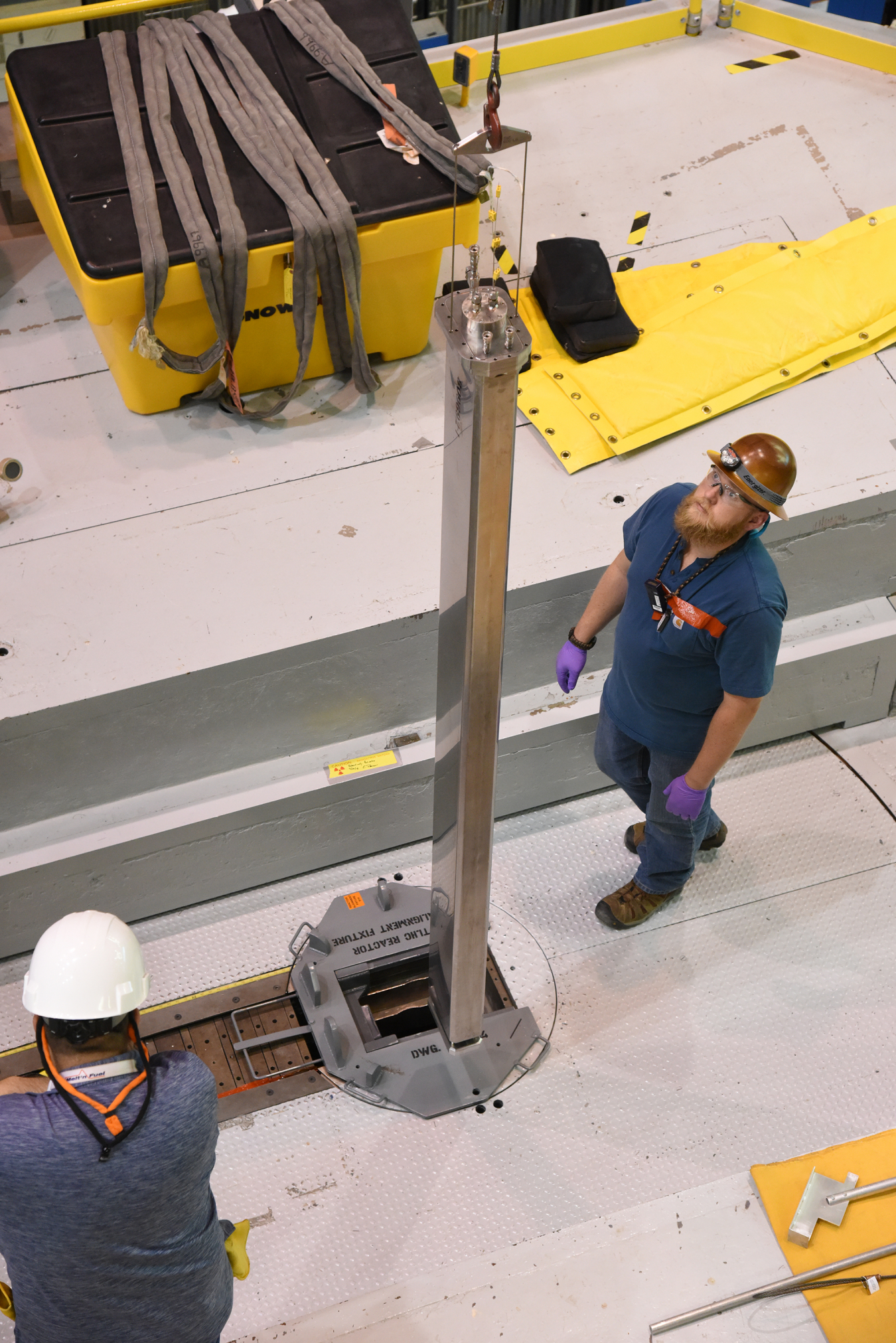New modular-based experiment holders provide rapid analysis and quicker turnarounds on smaller test samples of nuclear fuels and materials.
August 27, 2020

Partially assembled capsule for the MARCH system.
Idaho National Laboratory (INL) recently developed new modular-based experiment holders to improve its transient testing on nuclear fuels and materials. The new test vehicles are expected to cut years off of the development process and are opening the door for new clients, like NASA, to take advantage of the unique capabilities at the lab’s Transient Reactor Test Facility, also known as TREAT.
MARCH-ing ON
INL researchers created the Minimal Activation Retrievable Capsule Holder (MARCH) test vehicle system to provide rapid analysis and quicker turnarounds on smaller test samples of nuclear fuels and materials.
MARCH simplifies the testing process by combining modularity and adaptability. The key components include a specialized specimen holder and reusable safety capsule. Small samples are placed inside the specialized holder where experiments can be precisely tailored for neutron exposure, temperatures and the local thermal/cooling environment. The holders are then placed in a larger reusable safety capsule for insertion into TREAT. Once the transient test is complete, the specialized holders can be easily extracted at the facility and the safety capsule can be reused for another round of experiments.
Modernizing Transient Testing
The MARCH modular design expands TREAT’s unique capabilities by making experiment innovation cycles much faster and more affordable. The classic method required large-scale, fully-integrated experiments that took years to design and were costly to build. This made it difficult for smaller federal agencies, industry and universities to take advantage of the nation’s only transient test reactor.

TREAT operations staff hoisting the MARCH System over the core shield for reactor loading.
MARCH uses reusable safety capsules that are made from low-activation material. This means the test vehicles do not become significantly radioactive during irradiation and allows the experiment to be assembled or disassembled at the TREAT facility for rapid analysis.
The accelerated process supports a modernized approach to separate effects testing, which tests a specific individual physical property of a material, and couples scientific modeling with fuel performance data to produce quicker results. A process that once took two to three years to complete, can now be accomplished in just one year.
Designing the Modular Approach
TREAT is specifically designed to help qualify fuels and materials with the U.S. Nuclear Regulatory Commission by determining their safety margins. The facility tests nuclear reactor experiments under extreme conditions by producing sudden bursts of energy.
After shutting down in 1994, the TREAT facility upgraded key systems and components before resuming operations in 2017. While the test reactor’s infrastructure was restored, the traditional methods and experiment vehicle to conduct transient tests remained unchanged.
MARCH was developed over the course of three years through a series of INL Laboratory Directed Research & Development (LDRD) efforts supported by the U.S. Department of Energy (DOE) to help meet the emerging data and experimental demands of today’s scientific community.
“This LDRD project applied proof-of-concept research to help grow an innovative concept for doing experiments in the TREAT reactor and turned it into a practical framework that paved the way for all of the modern transient research performed to date,” said, Dr. Nick Woolstenhulme, the lead TREAT experiment design engineer.
Some of the ideas generated during LDRD research inspired nine new test modules that will provide greater flexibility for scientific discovery. Each of the projects have been selected for use in future irradiation experiments.
In just over two years, MARCH-based irradiations were initiated, supporting the development, testing, and licensing of accident tolerant fuels and other advanced fuels for industry that will continue for many years to come.
NASA is also using the MARCH holders at TREAT to develop and test fuel composites to see how they perform under the harsh temperatures needed for nuclear thermal propulsion.
Learn more about INL’s TREAT facility.

